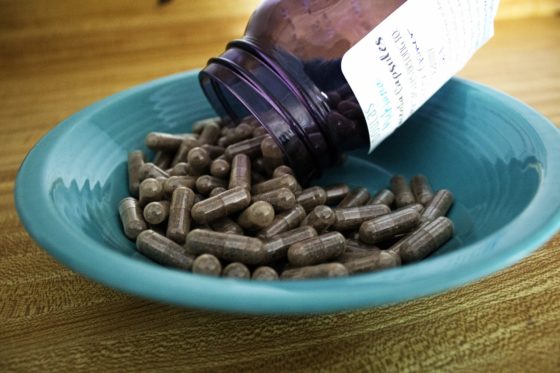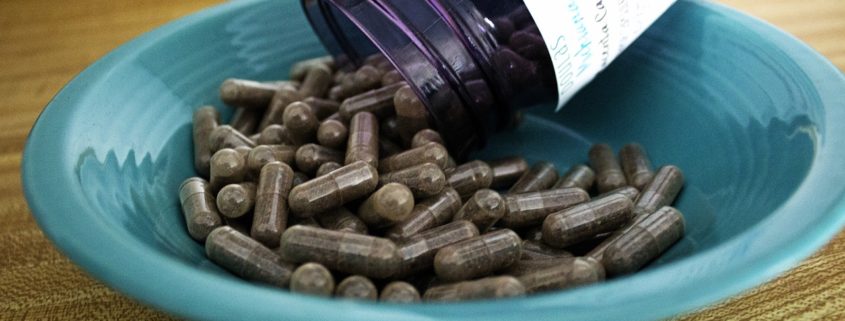Benefits and Risks of Placental Encapsulation
Article at a Glance
- More women are choosing to preserve their placenta after birth through placental encapsulation. The placenta is dried, ground into a powder, and placed into a capsule that women take as a vitamin in the weeks after childbirth to experience various benefits.
- Placenta pills have been shown to help reduce postpartum depression, boost oxytocin, and increase the amount of iron in our bodies. While there are no risks with supporting medical evidence against placenta encapsulation, the CDC still recommends against it. Women may become dizzy or nauseous from taking placenta pills.
- You can encapsulate your own placenta at home or hire someone to do it for around $100. Make sure to consult with your OB/GYN before encapsulating your placenta.

Last updated April 21, 2018.
In Thailand, it is customary to salt the placenta and place it in an earthenware jar. In France, placenta has been used as a beauty treatment in skin creams. And in Cambodia, the placenta is traditionally wrapped in a banana leaf, nestled beside the newborn baby for 3 days, and then ritually buried.
Cultures across the globe have different ways of using the placenta, the circular organ in your uterus which has nourished your baby through the umbilical cord during 9 months of pregnancy. The traditions vary, but there is one thing they share in common: the nutrient-rich placenta is never casually discarded.
Now, in the United States and Canada, more women are seeking to preserve their placentas through a method called placental encapsulation. Even celebrities like “Mad Men” actress January Jones have tried it. But, what exactly is placental encapsulation, and why would you eat your placenta? What are the benefits? Are there any risks? And how can you turn your placenta into pills?
Read on for answers to these questions, and more.
Contents
What is placental encapsulation?
Placental encapsulation involves the drying of the placenta and grinding into a powdered form within a few hours after birth and pouring it into a vegetable capsule for consumption. Essentially, it’s your placenta in a pill! You simply swallow the placenta capsule as you would your morning vitamins.
The placenta is large enough to produce a 30- to 60-day supply of placenta pills. Let’s take a look at a few of the benefits that this process can offer.
Placenta Encapsulation Benefits
There have been very few formal studies conducted on placental encapsulation, but most research that does exist shows the benefits of placental encapsulation. For example, one study surveyed 189 postpartum women who had consumed their placentas. A full 95% of these women reported positive outcomes.
Another study, however, claims that placental encapsulation offers no health benefits. But the vast majority of mothers have reported benefits in the following areas.
Help for Postpartum Depression
The baby blues are very real — as many as 15% of postpartum mothers develop some form of depression that can make the everyday demands of nurturing a baby seem almost impossible. There is anecdotal evidence that consuming the placenta may help ease symptoms of postpartum depression. According to one mom who encapsulated her placenta from the comfort of her own kitchen:
Once I started taking the placenta capsules, I was more energetic, less grumpy, sleeping better, producing more milk, and happier.
While it hasn’t been scientifically proven that popping a placenta pill will cure postpartum depression, many women swear by it, and it could be a natural remedy worth trying. But if your postpartum depression is severe and you’re having thoughts of harming yourself or your baby, it’s critical that you seek immediate professional help.
See also: Depression after Pregnancy: Symptoms and Management
Release of Oxytocin
According to the American Pregnancy Association, ingesting the placenta has shown in some cases to boost the release of the feel-good hormone of oxytocin. In addition to stabilizing your mood, oxytocin also helps return the uterus to its normal size while facilitating bonding with your baby.
Placenta pills may supplement your oxytocin levels, but the best way to enrich your oxytocin and bond with baby is always through good, old-fashioned touch.
See also: Bonding with Baby: 3 Tips Beyond Breastfeeding
Increased Iron Levels
Iron levels are often depleted after pregnancy, which can lead to a profound lack of energy. Anemia, which stems from low iron levels, can be a problem for some new moms as iron has been lost through bleeding during delivery and through sharing with baby in utero. Iron deficiency can result in insufficient milk syndrome and can also lead to urinary tract infections. In addition to these physical symptoms, low iron levels can contribute to irritability and postpartum depression.
The potential benefits of placental encapsulation may be physical, mental, and emotional. Your experience will be a personal one, though, and the biggest benefit may simply be knowing that you’re carrying on the natural cycle of your life-giving placenta.
Placenta Encapsulation Risks
The Centers for Disease Control and Prevention currently recommends against placental encapsulation, although there are few documented risks associated with the practice. There was one report of a baby falling ill with an infection after the mother ingested the placenta. Other moms have reported sensations of dizziness, headache, and nausea after taking the pills. But there’s no medical evidence to support the onset of these symptoms, and they may represent a psychological reaction.
It’s always better to be safe than sorry, so you should consult with your doctor before taking any placenta pills and discontinue the pills immediately if you experience any symptoms.
The bottom line is that research is still emerging on placental encapsulation, and neither the benefits nor the risks have been officially confirmed.
How to Make Placenta Pills
There are numerous hospitals and doulas across the country available to help you reap the possible benefits of placental encapsulation at a cost of $100-$200, but it’s also something you can do in the privacy of your own home. It is strongly recommended that you discuss your options with your physician before trying anything at home.
Pills may be the easiest way to ingest the placenta, but they’re not the only way. Some moms have incorporated their placentas into recipes like lasagna, chili, and even smoothies! As with every step of your journey into pregnancy and motherhood, it’s up to you to find your comfort level and do what works best for you and your baby in consultation with your doctor.
See also:








Oh. My. God.